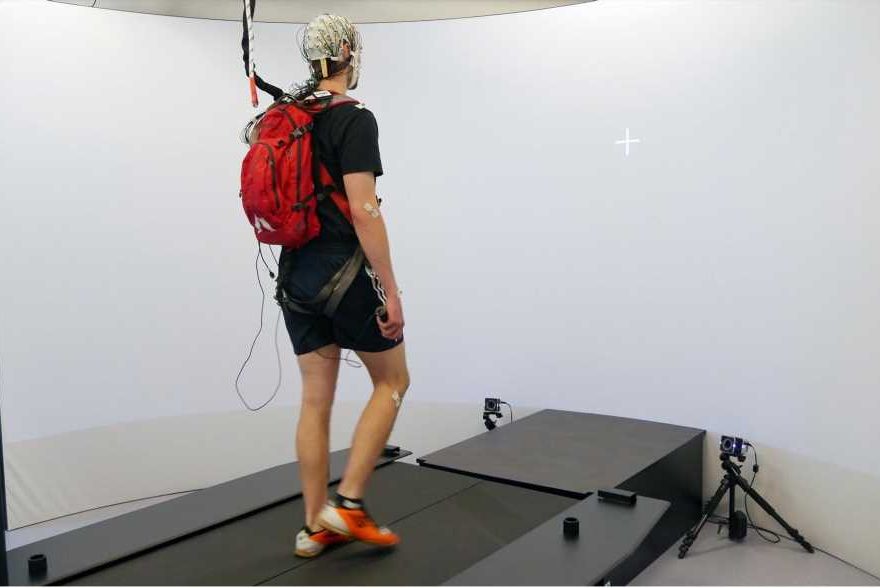
Modern living and working environments are increasingly characterized by the simultaneous execution of locomotion and sensory—mostly visual—processing. Also, many job profiles require the simultaneous processing of visual information while walking. For example, a worker in warehouse logistics has to go to the right aisle to pick up a package, while visual information about the next order is already presented to him via data glasses. Researchers at the Leibniz Research Center for Working Environments and Human Factors in Dortmund (IfADo) have studied the interaction of human locomotion with increasing movement complexity and visual processing in more detail using EEG recordings.
The researchers found that due to the scarce, shared cognitive resources available for cognitive and motor processes, task performance decreased when the load was increased in one of the two areas. However, walking also had positive effects on visual processing. Complex walking reduces the attentional resources available for efficient information processing, while unperturbed walking increases the efficiency of information processing compared to standing.
The results obtained suggest that walking without obstacles improves visual processing of information outside the central field of view and can thus support the perception of lateral sensory content. Thus, increased demands on motor skills need not always negatively affect cognitive processing and performance. Walking on flat surfaces can thus help with the allocation of attention to visual information in regions outside the central visual field.
Angle of exposure of the visual information is crucial
However, this advantage gets lost if the visual information is presented far outside the visual field. For the worker in warehouse logistics, this means that the ability to work is not impaired if the information is presented within a certain angle of vision and is easy to process. Locomotion can even help in processing task-related visual information if walking is not affected by the environment or requires too much visual coordination.
Source: Read Full Article
